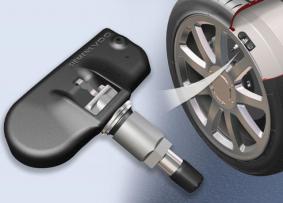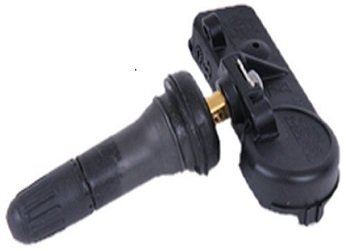
The inflation warning light comes on when a tire is about 5-10 PSI lower than recommended specifications. The exact figure depends on the year, make and model.
One of the most common issues to turn on the indicator is when temperatures plummet. A cold snap can lower the air pressure inside a tire enough to cause a warning.
One of the other common causes of an under-inflated scenario is when you pick up a nail in the tread and a slow leak develops. Even if none of these bad things happen to you, you’re still not in the clear.
Tires loose a small amount of pressure every year through tiny imperfections in the sealing bead. This means that after several years even the most expensive car might need air added to keep the light off.
Now we know why the light comes on lets talk about how these systems work. Let’s also talk about what it will take to reset the warning light and why the age of the automobile is directly related to how hard this will be.
Tire Warning System Past and Present
The tire pressure warning system started appearing on vehicles in early 2004. At first the system was a nifty little gimmick to help sell cars.
It gave the salesman of the first vehicles to deploy a tire pressure monitoring system an edge over the competition selling similar automobiles.
The federal government decided the system worked so well it would make it mandatory on all cars manufactured for the 2007 model year and beyond.
The tire pressure system is a fantastic idea. It addresses the long standing problem of under-inflated tires and the complacency of some motorists. I’m not going to knock it in this article.
However, anyone who has one of these systems and has experienced a tire pressure warning light will tell you, it’s not always a simple matter to turn off the light.
Fixing the problem and resetting the warning light on some models is extremely complicated. Also some cars require special tools to diagnose and repair malfunctions.
Hopefully this tire inflation monitor will become more users friendly, so the vehicle owner will be able to handle the reset of the warning light or make it reset automatically on all cars and light trucks.
I should mention that on the newest cars it’s not a problem anymore. Still, right now there is no standard and each car maker deploys its own uniquely designed monitor.
This is making it complicated for vehicle owners, car mechanics and tire shops to handle the increasing number of problems associated with the tire pressure monitoring system.
Tire Pressure Warning Problems

Now the low tire warning alert has been on the market for a while, car owners are starting to replace their worn-out tires.
Consumers may not realize the procedure is more complicated and extra care needs to be applied by the tire changers, because mounted inside is a small radio transmitter.
In most cases attached to the valve stem, but there other kinds as well. This small sensor contains a long life lithium ion battery and sends data to a separate tire pressure monitoring system computer.
They say these batteries can last for up to ten years if not damaged. Mounting tires at your local tire shop use to be a simple rip and tear operation.
Using hydraulic or air operated equipment you basically ripped the old tires off and squeezed the new ones on.However with the delicate plastic inflation sensor somewhere inside it’s easy to break it with a tire machine.
The shop, mechanic and the driver of the vehicle will not know there is a problem until the car starts driving down the road and the tire pressure warning light comes on.
If this happens to you go directly back to the shop and have them address the problem. Don’t let time pass as this might tempt the shop to claim they have nothing to do with it.
If you wait a few days and go back, they can deny any responsibility for causing the warning light problem. It may not be convenient to go directly back to the scene of the crime, but trust me it is important. No, calling is not good enough.
Tire Pressure Light Repairs
These valve stem mounted pressure sensors have a permanently installed lithium ion long life battery inside of them.
This makes the thing expensive. The last time I checked on the average price it was around $80 per sensor.
Domestic cars are less and German cars are more. If the tire place breaks all four they should be on the hook for about $300 worth of pressure sensor monitoring parts.
It is the shop’s responsibility to recognize that the vehicle they’re replacing tires on is equipped with this system some might even charge an extra fee.
The auto repair mechanic or tire man must take special care and avoid breaking or damaging any parts on this delicate and sensitive technology.
Also note if you get a nail in your tire and the warning light is illuminated on the dash, further action may be required after the tire is repaired and refilled.
Some systems will automatically reset after identifying the proper pressure in the tire. Others will require a procedure to be followed to reset the light.
An owner’s manual should describe the procedure and is a good source of information on what type of inflation monitoring system you have on your automobile. Give this tire warning light page a bookmark or share with a friend.
This is just one article I wrote to help the automotive consumer and do it yourself car mechanics. This next link takes you from tire pressure warning to auto repair news.
Learn more about this website on the homepage. Also find out why this car mechanic thinks many people can do their own driveway auto repairs.

